1940 | |
| May 10 Germany invades the Netherlands. May 15 The Netherlands surrenders to Germany; Dutch government flees to London. Netherlands Indies government declares a state of siege, and places the Indies on a wartime footing. German citizens in the Netherlands Indies are placed in internment camps. June Young Suharto enters the KNIL military school at Gombang. June 28 Japan says that it wants to renegotiate trade agreements with the Netherlands. July Indonesian exports to Japan are stopped. August Japan suggests that French Indochina and the Netherlands Indies should be incorporated willingly into the "East Asia Co-Prosperity Sphere". August 9 GAPI presents another petition for the "complete democratization of Indonesia". August 23 Commission for the Study of Constitutional Reforms is set up to look into the GAPI demands (but nothing else). Thamrin and others in the Volksraad withdraw their proposals for democratization, saying that the situation was becoming hopeless. September Japanese troops move into French Indochina. September 12 Netherlands Indies government begins trade talks with a Japanese delegation under Kobayashi. Van Mook does not cooperate with Japanese demands for aviation fuel. October 26 Japan and the Netherlands issue a joint declaration that the Indies will not be part of the "Co-Prosperity Sphere". November 12 Quota on oil sales to Japan from the Indies is set by agreement. December Kobayashi returns to Japan. | Even after the Netherlands had been taken over by Nazi Germany, the Dutch still held onto their colonies. For over a year and a half, the Netherlands East Indies government continued to rule over Indonesia, reporting to the Dutch government-in-exile. Efforts by Indonesian activists to organize self-rule were ignored. Some Japanese extremists had talked about building an empire in the Pacific in the early 1930s, or even earlier. In 1940, however, Japan still faced a possible military threat from the Soviet Union, and the Japanese military was unwilling to overextend their forces too far to the south. |
1941 | |
| January 6 Dutch arrest Thamrin, Douwes Dekker and other nationalists. Thamrin dies in custody five days later. Douwes Dekker is exiled to Surinam. January 11 New, more agressive Japanese negotiating team under Yoshizawa arrives in Batavia. February Increasing Japanese pressure on the Netherlands Indies government to "join the East Asia Co-Prosperity Sphere" is rebuffed by Van Mook. May 14 Japanese send an ultimatum to the Netherlands Indies government, demanding Japanese influence and presence in the region. June 6 Talks between Dutch and Japanese collapse. Netherlands Indies government replies that no concessions to Japan will be made, and that all strategic products (including oil and rubber) have been contracted for shipment to Britain and the United States. July 11 Volksraad organizes an Indonesian militia. July 25 Japan announces a "protectorate" over Indochina. July 26 Japanese assets in the Netherlands Indies are frozen. July 30 Dutch government-in-exile promises to hold conference on Indonesia after the war. November 30 Dutch naval forces in the Indies begin mobilizing. December 5 Netherlands Indies government sends a request to Australia to send forces to Ambon and Timor. Australian Air Force planes and personnel arrive on December 7. December 8 Japanese invade Malaya, landing in southernmost Thailand and northern Malaya. Japanese begin attacking the Philippines. Netherlands, among other nations, declares war on Japan. December 10 British battleships Prince of Wales and Repulse are sunk within hours of each other off Malaya. December 16 Anti-Dutch Acehnese make contact with Japanese forces in Malaya. December 17 Australian-led force lands in East Timor. Portuguese dictator Salazar protests. December 17 Japanese air raid on Ternate. Japanese land in Sarawak. December 22 Main Japanese invasion force lands in the Philippines. Hatta writes a newspaper article calling on Indonesians to oppose the Japanese. December 24 Japanese attack British forces at Kuching, Sarawak. | In August 1941, the Atlantic Charter was signed by the USA, Britain, and the governments-in-exile of many of the occupied nations of Europe, including the Netherlands. The Charter called for the "right of all peoples to choose the form of government under which they will live", among other things. In September of the same year, Dutch diplomats clarified that they did not think this applied to Indonesia. In 1941, the British and Americans as well as the Dutch began to tighten restrictions on business with Japan, including embargoes on supplies that could be used to wage war. In response, Japan announced that it would try to organize the "Greater East Asian Co-Prosperity Sphere", a bloc that would supply raw materials to Japan and receive exports in return. The original idea stretched the bloc as far as India and New Zealand. The bloc would be controlled by the Japanese military. Japanese propaganda also advanced the idea that Asian colonies of European powers should be free from Western control--but this implied that control of those colonies would fall to Japan by military force. The circumstances of Thamrin's death are not clear, except that he definitely died while in Dutch custody. The Netherlands Indies government suspected Thamrin and the others arrested in January 1941 of secretly collaborating with the Japanese. |
January 1942 | |
| January 2 Japanese take city of Manila. January 3 Japanese take Sabah. January 6 Japanese take Brunei. January 6 First Japanese air raid on Ambon. January 10 Japanese begin invasion of Indonesia in Kalimantan (Tarakan) and Sulawesi (Manado). January 11 Japanese take Tarakan. January 12 Van Mook makes an emergency trip to the United States, asking for reinforcements, and that the Netherlands Indies not be forgotten in the Allied defenses. January 13 Japanese take Manado. January 15 British Gen. Wavell takes command of ABDACOM, the first Allied joint command (Australian, British, Dutch, American) in the war. January 16 Acehnese agents return from Malaya with promises of Japanese support against the Dutch. January 23 Japanese take Balikpapan in spite of a strong Dutch and U.S. attack. January 25 Japanese take Kendari on Sulawesi. January 30 Japanese attack Ambon. KNIL and Australian forces destroy supplies to prevent them from falling into Japanese hands. Ambon city is taken within 24 hours. Fighting continues through February 2. Australian defenders suffer 90 percent casualties; many are massacred in February after being taken prisoner. British troops evacuate Malaya for Singapore. | The Netherlands Indies government had few resources of its own. With the Netherlands under control and the home government in exile in London, defense of the area fell mostly to the British and Americans. When the British lost Malaya and Singapore, and the Americans lost the Philippines, the defense of the Netherlands Indies became hopeless. |
February 1942 | |
| February 1 Japanese take Pontianak. February 3 Japanese bomb Surabaya, beginning air raids on targets on Java. February 4 Battle of Makassar Strait (naval battle between Kalimantan and Sulawesi): Japanese air and sea power forces Allies to withdraw to Cilacap. Japanese advance into Sulawesi. February 6 Japanese begin bombing Palembang. February 8 Japanese begin main assault on Singapore. February 9 Japanese bomb Batavia, Surabaya and Malang. February 10 Japanese take Ujung Pandang (Makassar). February 14 Japanese land paratroopers at Palembang, taking the city and its valuable oil industry. February 15 Singapore falls; 130,000 troops under British command are taken as prisoners of war. February 18 Van Mook, in Australia, pleads for Allied forces to make an offensive. February 19 Battle of Badung Strait (naval battle between Bali and Lombok): small Japanese force drives back Dutch and Australians. Japanese land on Bali. First Japanese air raid on Darwin, Australia. February 20 Japanese land on Timor. February 23 Revolt against Dutch begins in Aceh and North Sumatra, with Japanese support. Dutch transfer Sukarno to Padang; Sukarno slips away in chaos as Dutch evacuate. Dutch evacuate Sjahrir and Hatta from Banda by air minutes before the Japanese begin bombing the island. Japanese claim fall of Timor; Australian forces continue guerilla warfare. February 27 to March 1 Battle of Java Sea: Japanese destroy much of the Dutch and Australian naval forces near Surabaya. American destroyers escape to Australia. Dutch Admiral Doorman is killed. | |
March 1942 | |
| March 1 Battle of Sunda Strait: Japanese invasion force lands at Banten. Japanese invasion force lands west of Surabaya. Japanese air raid on Medan. March 5 Japanese air strikes at Cilacap. Japanese enter Batavia. March 7 Japanese take Cilacap. March 7 Rangoon falls to Japanese. March 8 Dutch under Starkenborgh in Java surrender outside Bandung. Van Mook escapes in a plane to Australia at the last moment. Japanese take Surabaya. March 11 Acehnese resistance engages in battles with retreating Dutch. March 12 Japanese land at Sabang. Operations in Aceh are finished around March 15. March 12 Japanese arrive at Medan. March 18 Japanese take Padang. March 28 Last Dutch force on Sumatra surrenders at Kutatjane, in the south of Aceh. Japanese ban all political activities and existing organizations. Volksraad is abolished. A ban is placed on merah-putih flags. Japanese 16th Army is in charge of Java; 25th Army in Sumatra (headquarters at Bukittinggi); Navy controls eastern Indonesia (headquarters at Ujung Pandang). | In March 1942, the Allied forces on Java were told by scouts that a Japanese force of 250,000 was marching on Bandung, when in fact the force was only one-tenth that size. This wrong information may have been a part of the Allied surrender on Java. The Dutch actually transferred Communists being held in prison camps in the Netherlands Indies, some of them since 1926, to prison camps in Australia when the Japanese arrived. |
April 1942 | |
| April 7 Three Netherlands Indies Radio employees are executed for playing the Dutch national anthem over the radio on March 18, after the capitulation. April 7 Japanese take Ternate. Japanese try to organize "AAA" movement; start propaganda campaigns. ABDACOM is dissolved. British and Americans divide responsibilities of war: British will try to retake Malaya and Sumatra as well as Burma. Rest of the Pacific and Indonesia becomes the responsibility of the U.S. (working with Australia). April 19 Japanese take Hollandia (now Jayapura). | |
May 1942 | |
| May 9 Japanese occupy Lombok. May 13 Japanese occupy Sumbawa. May 14 Japanese land on Flores, completing occupation by May 17. May 16 Japanese occupy Sumba. | |
June 1942 | |
| June 17 Netherlands government-in-exile in London sets up consultative board for the affairs of the Netherlands Indies. | |
July 1942 | |
| Remaining KNIL forces send detachments to Kai, Aru and Tanimbar islands. Japanese assemble Sukarno, Hatta, and Sjahrir in Jakarta. Sukarno, Hatta, Sjahrir meet privately: Sukarno to rally masses for independence, Hatta to handle diplomatic connections, Sjahrir to coordinate underground activities. Sukarno accepts Japanese offer to be head of Indonesian government, but answerable to Japanese military. July 30 Japanese occupy the Kai and Aru Islands, after some resistance on Kai. July 31 Japanese take the Tanimbar Islands after some resistance by KNIL and Australian detachments at Saumlaki. | Outwardly cooperating with the Japanese was the only option Sukarno and Hatta really had. The ultimate goal, of course, was not to support Japan, but to win independence for Indonesia. Later, the returning Dutch would try to accuse Sukarno of being a Japanese collaborator in order to get British support against the new Indonesian republic. Sjahrir, for his part, directed underground activities from his sister's house at Cipanas, near Bogor. Information was frequently and quietly shared between Sukarno, who could get information from Japanese inner circles, and Sjahrir. |
August 1942 | |
| August 29 Japanese begin transferring some forces from Sumatra and Java to the Solomon Islands. | |
September 1942 | |
| Indonesian Muslims refuse to bow towards Japanese Emperor in Tokyo. | |
October 1942 | |
| Japanese military advances in the Pacific stop; Japanese commanders told to organize pro-Japanese sentiments in occupied areas. October 16 Japanese 16th Army sends garrisons to Lombok, Sumba and Timor. | At the beginning, Japanese propaganda sounded like an improvement over Dutch rule. After the Japanese troops began stealing food and taking men for forced labor, the opinion of Indonesians turned against them. Against Indonesians, the Japanese military was mostly guilty of three things: forced labor, in which many Indonesian men were taken from their homes and sent as far as Burma to do construction and other hard labor in terrible conditions. Many thousands died or disappeared. forced requisitioning, in which Japanese soldiers took food, clothing, and other supplies from Indonesian families by force and without compensation. This led to much hunger and suffering during the war. forced slavery of women, in which Indonesian women were kept as "comfort women" for the amusement of Japanese soldiers. In addition, the Japanese kept Dutch civilians in internment camps under poor conditions, and treated military prisoners of war in Indonesia badly. War crimes in Indonesia--serious as they were--were not nearly as serious as those committed in China or Korea during the same period, however. Some commanders, such as Gen. Imamura in Java, were publicly criticized in Tokyo newspapers for being too "soft". There were even Japanese officers who were sympathetic to the idea of Indonesian independence, and who went out of their way to support Indonesian political figures and organizations, right up to Sukarno himself. |
November 1942 | |
| Revolt in Aceh is put down by the Japanese. Gen. Imamura is replaced on Java by Gen. Harada. (Imamura is reassigned to Rabaul.) | |
December 1942 | |
| December 7 Queen Wilhelmina of the Netherlands, in exile, gives a speech promising a reformed relationship with the colonies after the war. December 27 Japanese open first internment camp for Dutch women at Ambarawa. | |
January 1943 | |
| Japanese arrest Amir Sjarifuddin, break up his resistance movement. Sjarifuddin is sentenced to death, but Sukarno intervenes on his behalf. Australian guerillas evacuate East Timor. | The case of Amir Sjarifuddin is an unusual one. He was a Communist, yet received funds from the Dutch government-in-exile to support his resistance movement against the Japanese. |
February 1943 | |
| February 9 Japanese send extra troops to Tanimbar and Kai Islands, and Irian Jaya. February 10 Last Australian guerillas are evacuated from East Timor, after a year of resistance in the bush. | |
March 1943 | |
| March 9 Japanese organize Putera (Pusat Tenaga Rakyat, a political auxiliary organization). Sukarno is named chairman. Hatta and Ki Hadjar Dewantoro are members. Japanese begin to organize local military auxiliaries ("Heiho"), attached to regular Japanese units. | |
July 1943 | |
| Japanese arrest 1000 in South Kalimantan. July 7 Japanese Prime Minister Tojo promises Indonesians limited self-government in a speech at Gambir, Jakarta. | |
August 1943 | |
| August 13 US bombers from Australia hit Balikpapan. Japanese begin to take over sugar estates in favor of Japanese sugar producers; European managers are sent to internment camps. | Around this time, many Protestant ("Kristen") churches established Indonesian leaderships after Dutch churchmen and missionaries had been sent to Japanese internment camps. A side-effect of the Japanese occupation was to make Protestant churches more Indonesian. |
September 1943 | |
| Revolts against Japanese put down in South and West Kalimantan. September 8 Orders are issued from Japanese military headquarters in Saigon to organize "Giyugun" (local armies) throughout southeast Asia. | By the end of the war, around two million Indonesian had been recruited for service in the Giyugun or as Heiho auxiliaries. The Japanese felt that recruiting locals for defense was necessary, since Japanese units were increasingly being called up to fight the Americans elsewhere in the Pacific. |
October 1943 | |
| October 3 Japanese organize "Giyugun" (local defense forces) for Sumatra and Java. The force for Java is called PETA (Pembela Tanah Air). October The MIAI umbrella organization is remade into Masyumi (Majlis Syurah Muslimin Indonesia) under Japanese oversight. Japanese begin to impose compulsory labor on villagers (romusha), many thousands die or disappear. Japanese impose rice requisitioning. Dutch marine brigades in exile begin training at Camp Lejeune, North Carolina, USA, with the ultimate goal of retaking the Netherlands Indies. | Many notable figures were signed up for PETA, including Soedirman and Suharto. Independence activists saw military training not so much as support for Japan as preparation for possible independence. By mid-1945, there were 120,000 armed fighters in PETA. This group later formed the core of the new Indonesian Armed Forces (TNI, later ABRI) after independence was proclaimed in 1945. |
November 1943 | |
| November 3 Hatta gives a speech urging Indonesians to join the Giyugun (PETA). November 10 Sukarno, Hatta, and Kyai Bagus Hadikusumo are flown to Tokyo to be decorated by the Emperor of Japan. | This was the first time that Sukarno had travelled abroad. Hatta, who had spent years in Europe, was less easily impressed. |
December 1943 | |
| Barisan Hizbullah is organized by the Japanese; an armed force of Muslim youths associated with Masyumi. | |
1944 | |
| January Putera is replaced by the Jawa Hokokai/Java Service Association. Sukarno is chairman. April 19 Allies bomb Sabang in Aceh. April 22 Allies retake Hollandia (now Jayapura). May 9 Japanese commanders decide to abandon West Irian. May 17 Allied air raid on Surabaya. May 27 US force lands on Biak. June 4 Japanese begin counterattack on Biak. August Barisan Pelopor is organized as the youth wing of Jawa Hokokai (after independence, it would become known as Barisan Benteng). August 11 Allied air raid on Palembang. August 28-29 Ambon is mostly destroyed by Allied air raids. September 8 Japanese General Koiso promises that Indonesia (meaning all the territories of the Netherlands Indies) will be independent in the "very near future". September 8 US forces finally clear the last Japanese forces from Biak. September 15 Allies land on Morotai. Japanese authorities begin organizing regional councils (with advisory powers only). October Australian forces begin bombing Balikpapan. Japanese organize a Central Advisory Council, similar to the Volksraad, with no legislative powers. November Harada is replaced as military governor by Yamamoto. Pakubuwono XII becomes Susuhunan of Surakarta. | A small Netherlands East Indies administration was set up in the eastern areas that Allied forces passed through in 44-45 on their way to the Philippines. Towards the end of the war, the death toll among Dutch nationals and other Europeans in the Japanese internment camps was as high as 20%. |
February 1945 | |
| February 14 Peta soldiers at Blitar attack the Japanese armory there. | |
March 1945 | |
| March 1 Badan Penyelidik Usaha Persiapan Kemerdekaan Indonesia (BPUPKI), a committee to prepare for Indonesian Independence, is announced by the Japanese. Members include Sukarno, Hatta, Wahid Hasyim, many others. Chairman is Dr. Radjiman Wediodiningrat. | |
April 1945 | |
| Japanese Vice-Admiral Maeda, head of Naval Intelligence in Indonesia, sponsors speaking tour by Sukarno and Hatta to Ujung Pandang. April 30 Australian and Dutch forces land at Tarakan. | |
May 1945 | |
| May 2 BPUPKI holds first session (until June 1). Supomo speaks to the committee against personal individualism, and in favor of national integration. Muhammad Yamin proposes that the new nation should include Sarawak, Sabah, Malaya, and Portuguese Timor, as well as all the territories of the Netherlands Indies. Yamin also suggests that the new Indonesia should ignore international law and declare all ocean areas between islands as territorial waters. May 3 Acehnese guerillas overrun Japanese outpost at Pandrah, killing all Japanese forces with no losses among their own. Controversy continues among BPUPKI attendees regarding the role of Islam in the new Indonesia. | Yamin's statements to the BPUPKI committee were strongly nationalistic, and made appeals to the history and territorial claims of Majapahit as well as general appeals to unite peoples of a common Malay race and culture. |
June 1945 | |
| Maeda sponsors speaking tour by Sukarno and Hatta to Bali and Banjarmasin. June 1 Sukarno describes "Pancasila" doctrine in speech to the BPUPKI independence committee.
June 10 Australian forces land in Brunei. Dutch forces land in North Sumatra. June 22 A special commission under Sukarno to resolve the disputes over the role of Islam in the new Republic settles on compromise language, later known as the Piagam Jakarta or "Jakarta Charter". The compromise language simply states that Muslims are obligated to follow Islamic law. June 24 Allied forces land on Halmahera. | The Pancasila is the national doctrine of Indonesia, the ideals that society should try to live up to. For more info, see the Notes on Pancasila. |
July 1945 | |
| Japanese military meets in Singapore. Plans are made to hand over Indonesia to Indonesian independence leaders. July 1 Australian forces take Balikpapan. U.S. bombers hit Watampone, other sites in Kalimantan and Sulawesi. July 8 Sekolah Islam Tinggi is founded in Batavia (ancestor of the IAIN network of religious universities). July 10 Second BPUPKI session is held (until July 17) for discussions to draft a constitution for Indonesia. Hatta criticizes Yamin's nationalistic statements, and suggests that West Irian might be left out of the new Indonesia. Sukarno supports Yamin. Haji Agus Salim suggests that people in the British and Portuguese possessions could vote on whether to join Indonesia. A majority of the committee votes that Indonesia should include Malaya, Sarawak, Sabah and Portuguese Timor, as well as all the Netherlands Indies. July 11 US air raid on Sabang. |
Kamis, 18 Maret 2010
SEJARAH PERAN DUNIA 2
Langganan:
Posting Komentar (Atom)
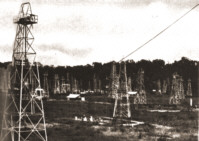
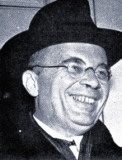
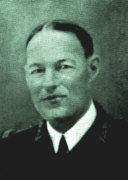
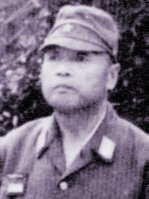
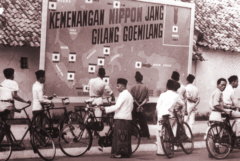

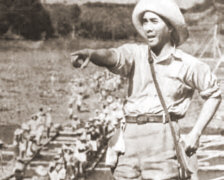
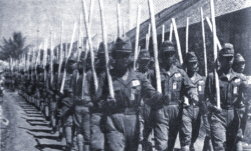
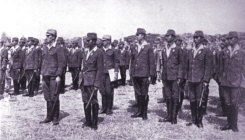

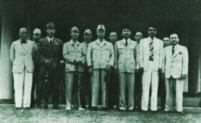
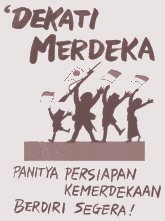
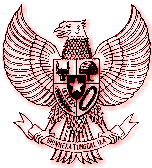












Tidak ada komentar:
Posting Komentar